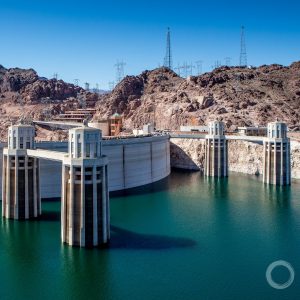Federal Water Tap, May 24: In Congress, Lawmakers Target Water Debt Relief, Drought Response
The Rundown
Lawmakers introduce proposals on water debt relief, western water infrastructure, water bill assistance, and national drinking water standards for an algal toxin. The White House, in negotiations with Republican leaders, reduces the size of its infrastructure proposal to $1.7 trillion. President Biden orders federal agencies to assess financial risks of climate change. The CDC reports disease outbreaks linked to pools and hot tubs. NOAA anticipates a busier-than-usual Atlantic hurricane season. A House committee holds a hearing on water legislation. The USGS calculates evaporation from Lake Mead. And lastly, federal forecasters expect even less snowmelt to flow into Lake Powell this summer than they did earlier this month.
“So we push for increased funding levels for critical transportation infrastructure, like rail, especially considering China’s level of investment in such projects, as well as the elimination of lead pipes that poison drinking water, and resilience projects as extreme weather events — as we’ve seen around the country — continue to become more common as a result of climate change.” — Jen Psaki, White House press secretary, discussing priorities that remain in the administration’s infrastructure proposal.
By the Numbers
1.9 meters: Average amount of water, measured vertically across the entire reservoir, that evaporates from Lake Mead each year, according to a U.S. Geological Study report. The measurements will improve understanding of the lake’s annual water balance, said Katherine Earp, a study co-author.
208: Disease outbreaks in the U.S. between 2015 and 2019 that were linked to swimming pools, hot tubs, and other treated recreational waters, according to a Centers for Disease Control and Prevention report. The pathogens causing the most outbreaks were Cryptosporidium and Legionella. Just over half of the outbreaks began in June, July, or August. One-third were traced to a hotel or resort.
In context: Legionnaires’ Disease in the United States
News Briefs
Infrastructure Negotiations
President Joe Biden met with Republican senators last week to discuss his infrastructure proposal. The White House ended up lowering its topline figure from $2.3 trillion to $1.7 trillion, shifting provisions on supply chains, small businesses, and research and development to other bills.
Even that reduction was still panned by the opposition, which put forward a $568 billion package in April.
Jen Psaki, the president’s press secretary, said that the administration will continue to push funding for eliminating lead pipes and building resilience to extreme weather.
Financial Risk of Climate Change
President Biden ordered federal agencies to investigate financial risks stemming from climate change and to disclose how those risks affect certain elements of the U.S. financial system.
The executive order requires a broad range of actions that target both public and private assets as well as government programs.
The Treasury Department will assess risks in insurance markets. The Labor Department will explore risks to pension funds. The Office of Management and Budget will look into financial reporting and accounting standards that integrate climate risk.
Three White House deputies — the national climate adviser, the director of the National Economic Council, and the assistant to the president for economic policy — will produce within 120 days a strategy that ties the whole order together: a plan for managing, assessing, and disclosing climate-related financial risks to government programs, assets, and liabilities.
Water Bills in Congress
A deluge in recent weeks. A sampling:
- The Water Debt Relief Act would authorize $4 billion for reducing residential customers’ past-due water bills. It’s intended to be a pandemic response. To be eligible, a household must have accrued new debt after March 1, 2020. The program would be run by the EPA, which would provide payments to utilities that forgive customer arrears. It is not clear how it would mesh with a debt-relief program operated through the Department of Health and Human Services that has $1.1 billion but has not yet delivered any of that to customers.
- The Low-Income Water Customer Assistance Programs Act would authorize the EPA to provide grants that help customers pay their drinking water and wastewater bills. The act would authorize states to implement assistance programs on behalf of small systems serving fewer than 10,000 customers where at least 20 percent are below the federal poverty line. The customer assistance grant is meant to supplement local funds, not replace them. The bill would also authorize a national needs study to evaluate the number of homes that do not have affordable and functioning drinking water, wastewater, or stormwater services. No funding amounts were mentioned in the bill.
- The Assistance, Quality, and Affordability Act is a bill in three parts. Part one would provide grants and loans for water infrastructure improvements like lead service line replacement and PFAS treatment. Part two is about regulations. It would require the EPA to set national drinking water standards for microcystin and 1,4-dioxane. Part three is a water debt relief provision that mirrors the bill described above.
- The Drinking Water Funding for the Future Act would reauthorize more than a dozen drinking water programs including lead testing in schools, source water protection, and workforce investment.
- The FUTURE Act is a broad bill that would direct billions to western water infrastructure. It includes provisions on water recycling, water storage, desalination, and water access for disadvantaged communities. There are sections on stream gauges, fish passage, using weather forecasts to inform water releases from Army Corps reservoirs, and stopping illegal water diversions for marijuana grows.
- The BLUE GLOBE Act focuses on the nation’s bays, estuaries, oceans, and the Great Lakes. It would require the federal government’s economic agencies to measure the “value and impact” of the blue economy, meaning industries that use the open waters.
Clean Water Act Compliance
The EPA finalized a rule that updates the type of analytical tests that are allowed for monitoring pollution discharges under the Clean Water Act. The changes apply to any company or municipality that has a NPDES discharge permit.
Studies and Reports
Colorado River Basin Forecast Worsens
It was already bad. Now, federal forecasters say that the spring runoff in the Colorado River basin will be even lower than what was projected at the beginning of the month due to less-than-average precipitation in May.
The Colorado Basin River Forecast Center lowered its projected runoff into Lake Powell by two percentage points, to 26 percent of normal. Normal means the 30-year average. It is one of the worst runoff years since the lake was filled in the 1960s.
In context: Extremely Dry Conditions Spill Across the American West
On the Radar
Hurricane Outlook
NOAA forecasters expect a lot of hurricanes in the Atlantic this year, saying there is a 60 percent chance of an above-normal season.
The forecast is for three to five major hurricanes, those with wind speeds above 111 miles per hour that are rated category 3, 4, or 5.
Rainfall, which can be just as destructive, does not factor into the rating system.
The Atlantic hurricane season traditionally begins June 1. But the first named storm of the season, Tropical Storm Ana, formed this weekend.
Congressional Hearings
- On May 25, the House Energy and Commerce Committee will hold a hearing on 10 bills related to drinking water. The bills address topics such as lead pipe removal, water debt relief, PFAS, and water systems in the colonias of Texas.
- Also on May 25, the House Natural Resources Committee will get an update on drought conditions in the western United States.
- On May 26, the House Appropriations Committee discusses the Defense Department’s environmental restoration program.
Federal Water Tap is a weekly digest spotting trends in U.S. government water policy. To get more water news, follow Circle of Blue on Twitter and sign up for our newsletter.
Brett writes about agriculture, energy, infrastructure, and the politics and economics of water in the United States. He also writes the Federal Water Tap, Circle of Blue’s weekly digest of U.S. government water news. He is the winner of two Society of Environmental Journalists reporting awards, one of the top honors in American environmental journalism: first place for explanatory reporting for a series on septic system pollution in the United States(2016) and third place for beat reporting in a small market (2014). He received the Sierra Club’s Distinguished Service Award in 2018. Brett lives in Seattle, where he hikes the mountains and bakes pies. Contact Brett Walton





Leave a Reply
Want to join the discussion?Feel free to contribute!